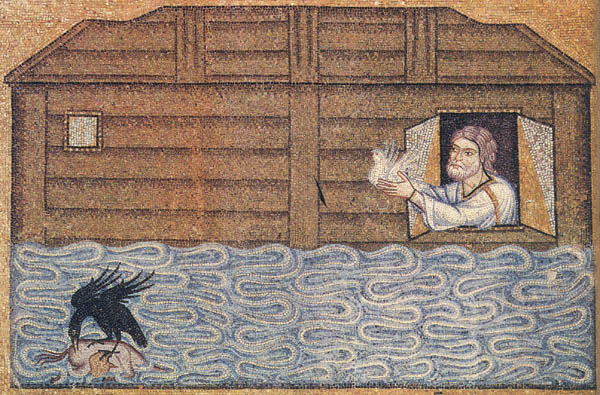Image Details

Scala/Art Resource
Sending forth the raven and the dove (shown here, compare with photo of stained glass window). Noah stands at the open window. Trapped inside the ark, he prepares to release the dove, poised for flight in the palms of his hands, in order to discover if the waters of the Flood have abated. Earlier Noah dispatched a raven, left, which now picks on the carcass of an animal that drowned in the deluge.
The ark floats in the turbulent water, represented by blue and white mosaic stones in undulating bands. This 13th century mosaic appears alongside other mosaics depicting scenes from the Flood story in the atrium of the Church of San Marco in Venice.
In Genesis, chapter 8, Noah twice determines whether the flood waters have receded. Verses 1–5 report that the waters of the Flood abated at the end of 150 days, and that later “the ark came to rest on the mountains of Ararat … [and] the tops of the mountains were seen.” Genesis 8:6–14 returns to the Flood and describes a test for dry land at the end of 40 days. The dove sent forth by Noah “found no place to set her foot, and she returned to him to the ark, for the waters were still on the face of the whole earth.”
When Noah again released the dove seven days later, she returned with a freshly plucked olive branch, and Noah “knew that the waters had subsided.” After another seven days the dove was again released; it did not return and “in the second month on the twenty-seventh day of the month, the earth was dry.” These two versions are assigned by some scholars to different authors—the first to the Priestly source (P), the second to the Yahwist source (J).
